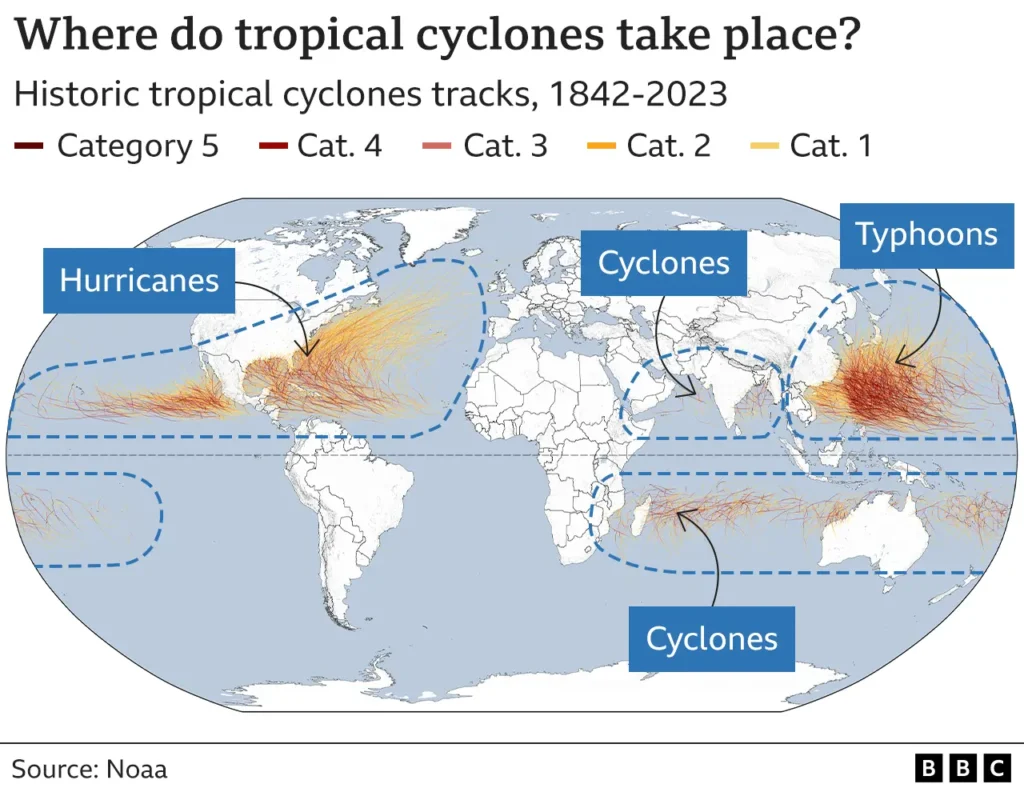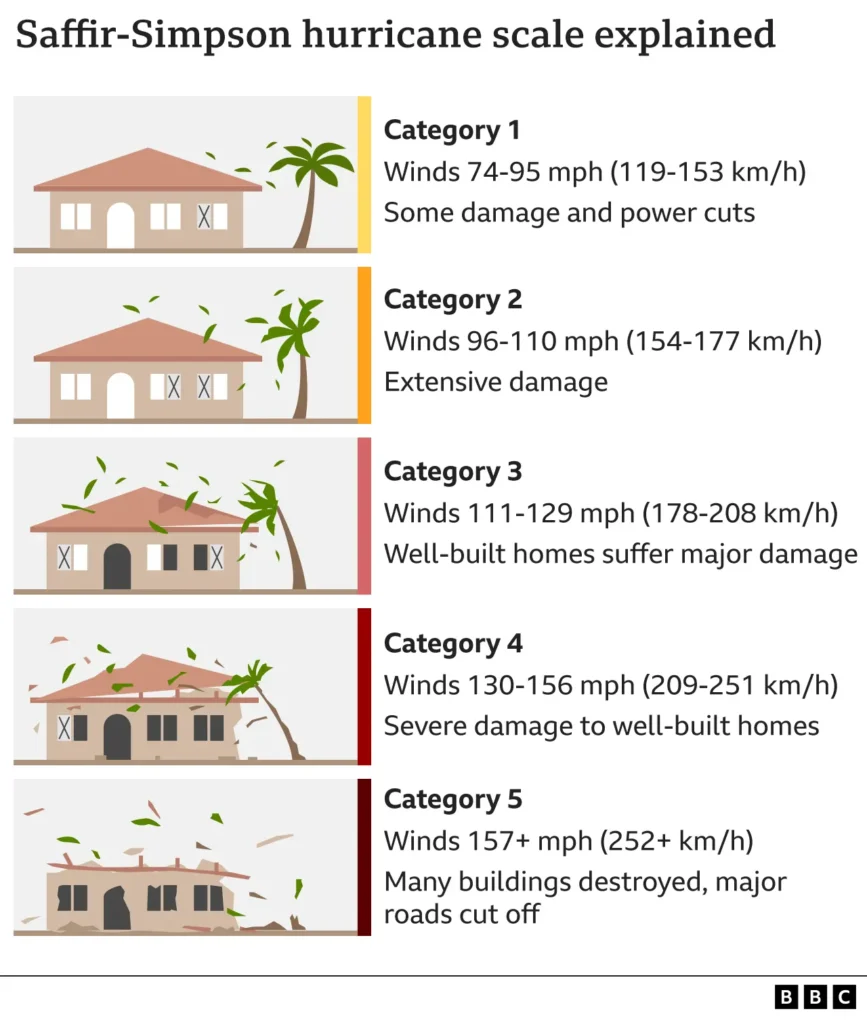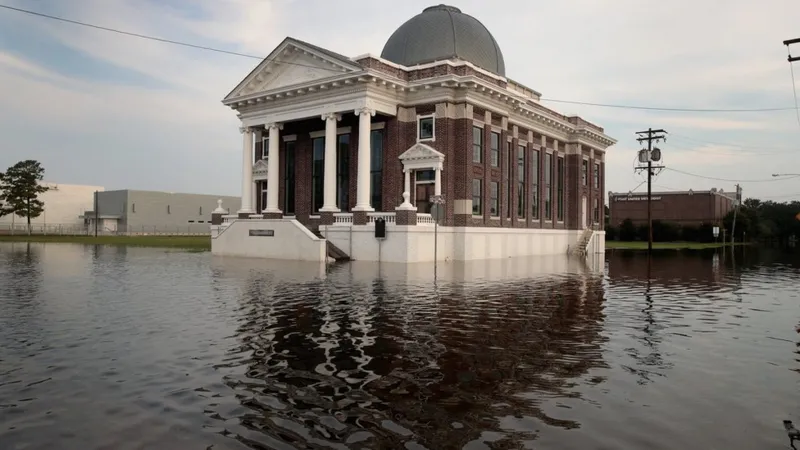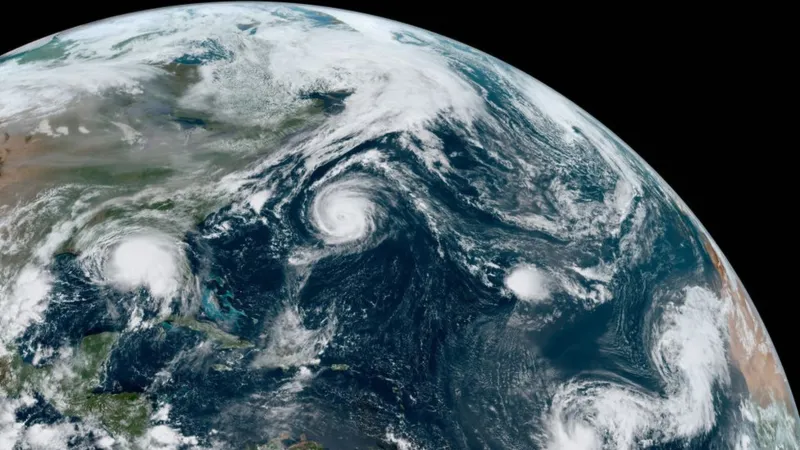Climate change is a global challenge, and its effects are increasingly visible in the form of extreme weather events. One of the most significant effects of climate change is on hurricanes, typhoons, and cyclones. These powerful storms, collectively known as tropical cyclones, have always been part of our planet’s weather system. However, recent data shows that climate change is making these storms more intense and destructive.
Understanding Hurricanes, Typhoons, and Cyclones
Hurricanes, typhoons, and cyclones are different names for the same natural phenomenon: a tropical cyclone. The name depends on where the storm occurs. In the Atlantic Ocean and northeastern Pacific Ocean, they are called hurricanes. In the northwestern Pacific, they are called typhoons, and in the South Pacific and Indian Ocean, they are known as cyclones. These storms are characterized by extremely high wind speeds, heavy rainfall, and storm surges that can cause significant flooding and widespread damage.

Tropical cyclones develop over warm ocean waters when the right atmospheric conditions are present. The warm water acts as fuel for the hurricane, providing the heat and moisture it needs to grow and strengthen. As the storm grows, it begins to spin, creating a powerful vortex of wind and rain that can extend for hundreds of miles. These storms can vary in intensity, with the most severe storms reaching wind speeds of over 150 mph (240 km/h).
Are hurricanes getting worse?
Over the past few decades, the intensity of tropical cyclones has increased significantly. While the total number of tropical cyclones globally has not increased significantly, there is evidence that a greater proportion of these are reaching category three or above, meaning they are becoming more powerful. For example, a category three hurricane has wind speeds of at least 111 mph (178 km/h), capable of causing catastrophic damage.
According to the Intergovernmental Panel on Climate Change (IPCC), there is “moderate confidence” that the amount of rainfall associated with tropical cyclones has increased. There has also been an increase in the frequency of “rapid intensification events.” This occurs when a tropical cyclone’s wind speed increases very quickly, making them particularly dangerous because they can strengthen suddenly, leaving little time for preparation and evacuation.
In addition, tropical cyclones appear to move more slowly across the Earth’s surface. This slower motion can cause rainfall to last longer in a specific area, increasing the risk of flooding. For example, in 2017 Hurricane Harvey stalled over Houston, Texas, dumping nearly 40 inches (100 cm) of rain in just three days and causing catastrophic flooding.

How climate change affects hurricanes
Understanding the relationship between climate change and hurricanes involves looking at the many factors that influence the formation and strength of these storms. Here are some of the most important ways climate change is affecting hurricanes:
Warmer ocean waters: The most direct effect of climate change is affecting hurricanes by increasing ocean temperatures. Warmer water provides more energy to storms, making them more powerful. This can increase wind speeds and make storms more intense. For example, higher sea surface temperatures in the Atlantic in recent years have contributed to predictions of “exceptional” hurricane seasons.
More moisture in the atmosphere: A warmer atmosphere can retain more moisture, which means hurricanes can produce more rain. When the storm moves over land, the increased moisture can lead to heavy rainfall and flooding. This was the case with Hurricane Harvey in 2017, where extreme rainfall became three times more likely due to climate change.
Rising sea levels: Sea levels are rising due to the melting of glaciers and ice sheets and the expansion of seawater as it warms. This means that storm surges associated with hurricanes are starting from a higher baseline. Higher sea levels can lead to more severe coastal flooding during hurricanes. Hurricane Katrina in 2005 is a clear example of this, where flood heights were significantly higher due to climate change-related sea-level rise.
Changes in hurricane patterns: There is evidence that the average location of tropical cyclones reaching peak intensity is shifting poleward in some regions, such as the western North Pacific. This shift may expose new areas to these powerful storms, putting communities that have never experienced such extreme weather at risk.

Slower-moving hurricanes: A decrease in the speed of tropical cyclones is another potential effect of climate change. Slower-moving storms mean more time for rain to fall on a given area, increasing the likelihood of flooding and associated damage.
Future predictions: What can we expect?
The future of hurricanes in a warming world is a complex topic, but scientists have some suggestions
